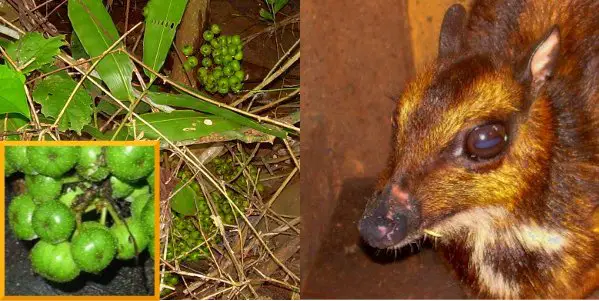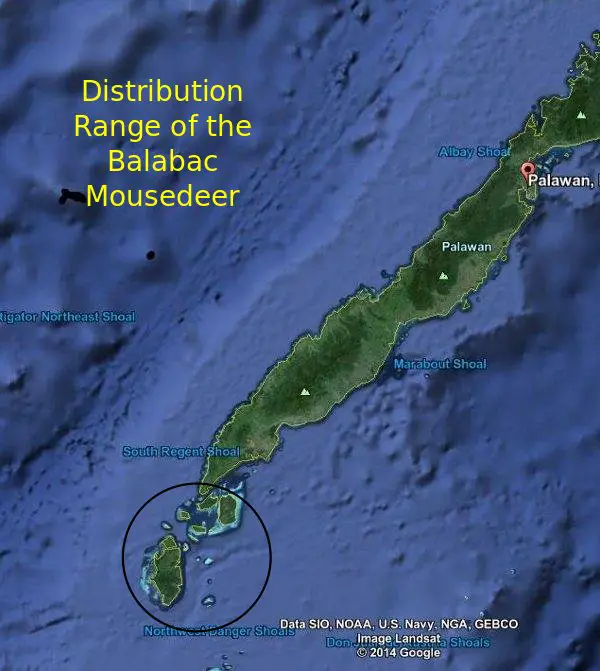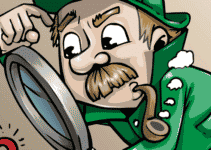Have you heard about or seen the Balabac mouse deer lately? How does it look like? Is it really a mouse or a deer? For those who are not familiar with this unique species of animal, this article is for you. Read on to find out answers to these questions.
In one of the remote islands of the Philippines, there exists an animal called pilandok or the Palawan mouse deer. Pilandok looks like a deer, but its small size at birth approximates that of a mouse. This may be the reason people call it a mouse deer. When mature, however, it’s way too large to be called a mouse. It can grow to 50 cm from the head to the base of the tail, five times bigger than the biggest mouse.
The term “mouse deer” is a misnomer because, in reality, this mammal belongs to the Chevrotain family. In French, chevrotain literally means “little goat.” Thus, it is neither a mouse nor a deer although the latter gains more semblance.
Judge by yourself where this animal should be classified by the way it looks below.

Do you agree that it looks more like a goat than a deer? Or would you rather call it a mouse?
Notice that the pupil of eye of the mouse deer is oriented horizontally. This feature characterizes goats, hence, confirming the observation that it should not be classified as a deer but to another family, i.e., the Chevrotain. This eye orientation indicates that the animal is active at night.
The mouse deer in the picture was captured way back in 2006 in Balabac Island. Allegedly, a group of locals cornered the confused mouse deer while trying to find food along the seashore amidst large stands of the firefly mangrove, Sonneratia alba. Its favorite food is a species of fig called tubog shown in the picture above.
The animal was difficult to find even while some people say it is commonly encountered along the road. In fact, the International Union for the Conservation of Nature (IUCN) classifies the Palawan mouse deer as an endangered species. Being endemic to islands of Balabac, Bugsuk and Ramos Islands at the southwest part of Palawan Island (see map below), its remaining population is threatened by encroachment to its habitat as well as human consumption of its delicious meat.

Another threat is that nobody has done a population study yet as far as I am concerned. Nobody exactly know how many of these animals are still in the wild. Further, according to IUCN, research is needed on its habitat requirements, threats and conservation needs.
A comforting fact is that the mouse deer are r-strategists, meaning, they reproduce fast once allowed to do so. By the time I get back to Balabac Island again, I hope to see more of them and take better pictures and videos.
Do you have additional information you want to share about the Balabac mouse deer? Write me and I’ll feature your contribution.
Reference
Oliver, W., Matillano, J. & Widmann, P. 2008. Tragulus nigricans. The IUCN Red List of Threatened Species. Version 2014.2. . Downloaded on 10 September 2014.
© 2014 September 10 P. A. Regoniel




Dear Nina, I wrote this article to document whatever has been done so far to know more about the mouse deer. Your interest reminds me to follow-up the collection of information about it. I hope to gather more information in the next few weeks so that you can have more information about the population status of this interesting creature. I’ll ask colleagues living in that place.
Hello there!
Nice little article about the rare mousedeer.
I’m travelling to the philipines in a couple of months and woud love to see a mousedeer. Have tried but not found a lot of info about any consrevation programs with maybe a chance to do some voulenteer work. Any information would be much appreciated!
Thank you so much
Nina Niemi, Finland